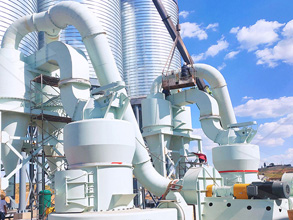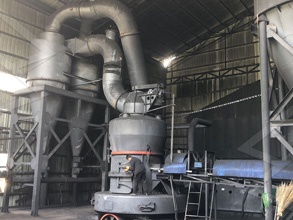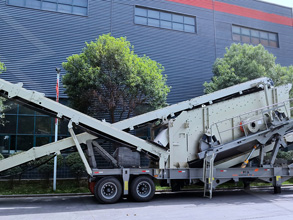

2023年12月1日· The results of this study provide quantitative information and discuss the feasibility of reutilizing WR and DP, thereby improving the reuse value of lowquality C&D waste product and contributing to the complete utilization of construction waste2017年3月18日· Specimens of the third group of samples made based on BRFM from mortars adhesive residues, presents results of compressive strength reaching 72% ofStudy of Fine Mortar Powder from Different Waste Sources for

efficient processes for handling waste concrete, for example, in Ecuador near the 76% of households use the concrete structures and masonry mortar systems (INEC 2010)2023年7月15日· Two fine powders collected from construction and demolition wastes (CDW), ie, recycled concrete powder (RCP) and recycled clay brick powder (RBP),Recycling fine powder collected from construction and

2023年9月10日· Considering the necessity of resource utilization for waste highstrength mortar/concrete and the production of highquality recycled fines, this study investigatedThe current research determines chemical composition of burned recycled mortar powder fines (BRMF) obtained from different sources Also, this experimental research, analyzesStudy of Fine Mortar Powder from Different Waste Sources for

Overview Abstract This paper study the feasibility of reusing waste iron powder (WIP) in mortar as both natural fine aggregate (NFA) and cement replacement material2018年3月1日· For this, four different mix proportions of mortars were evaluated in terms of workability, drying shrinkage, compressive strength, bond and adhesive strengths,Utilization of marble powder as fine aggregate in mortar mixes

2023年7月28日· Results indicated that, for sustainable development, an ecofriendly mortar can be made by replacing cement with RMWP at a rate of 15%, resulting in a 17%2023年10月20日· The feasibility of using MSWIBA to replace natural sand in the preparation of selfcompacting mortar () was investigated to realize the resource utilization of MSWIBA The changes in regarding durability, mechanical properties and workability when MSWIBA was added at varying ratios were explored in this studyFeasibility of preparing selfcompacting mortar via municipal

2021年7月1日· The feasibility of using coal gangue powder as a cementitious material to replace part of cement has been confirmed; however, the maximum substitution ratio still has an upper limit In summary, the CDW and industrial solid waste have engineering application potential as supplementary cementitious materials to substitute part of the2022年7月18日· Cementitious composites are one of the most widely used building materials in civil engineering However, their low Young’s modulus cannot meet the requirements of longspan structures This work carried out a feasibility study on producing selfcompacting mortar () with high elastic modulus by using Al 2 O 3 microFeasibility of manufacturing selfcompacting mortar with high

2021年5月31日· Abstract This work studies the possibility of incorporating different proportions of glass powder from the waste glass (rejected material called fine cullet) produced during the glass recycling process into the manufacturing of mortar and concrete For this purpose, the material is characterized by its chemical composition andAshish DK (2018) Feasibility of waste marble powder in concrete as partial substitution of cement and sand amalgam for sustainable growth J Build Eng 15:236–242 Google Scholar Khyaliya RK, Kabeer KISA, Vyas AK (2017) Evaluation of strength and durability of lean mortar mixes containing marble wasteExperimental study on the behavior of waste marble powder as

2019年10月1日· This would reduce the amount of ceramic waste to be dumped, and the cement consumption and carbon footprint of the concrete production To study the feasibility of such powder filler technology, a number of mortar mixes containing different water, cement and CPW contents were produced for workability, strength and SEM tests2023年12月1日· The current utilization of lowquality recycled fine aggregate sourced from concrete waste acting as river sand replacement cannot achieve the preparation required for highquality recycled mortarUtilization potential of waste residue and dust powder from C&D waste

2020年4月1日· In order to investigate feasibility of waste oyster shell powder (WOSP) as fine aggregate to produce ecofriendly mortar, workability (slump flow and slump flow loss), mechanical properties2019年6月1日· Phase 2 includes the treatment of agricultural and food waste for the extraction of lactic acid powder Phase 3 is the production of PLA from coffee waste and cotton waste The experiments were performed at Nile University Material science lab; the samples were tested in the Regional Center for Food & Feed, under the authority of theThe synthesis, production & economic feasibility of manufacturing

2019年11月4日· Recycled fine aggregates of concrete, brick and mortar from CDW with proper size and proper mixing ratio with soil give a satisfactory result in improving different geotechnical properties of the2018年12月10日· This paper reports the feasibility of utilizing waste generated from cutting and finishing of granite blocks as a replacement of fine aggregate in mortar mixes With this in mind, fine aggregate in cement mortar mixes was replaced by waste granite powder in the range of 30–40% by volumeImpact on mechanical properties of cement sand mortar containing waste

because both waste ceramic powder and fine aggregates generally feature wider grain size distribution than cement and river sand, higher matrix compactness could be achieved, with reduced pore sizes [14] The reduced pore size also2020年3月1日· The strength efficiency of cement in mortar with the waste powders mortars increases with the increase of waste powder replacement ratio at later ages (56 and 90 days)Utilization potential of aerated concrete block powder and

2023年7月15日· Two fine powders collected from construction and demolition wastes (CDW), ie, recycled concrete powder (RCP) and recycled clay brick powder (RBP), were used as partial alternatives to cement for mortar preparation The effects of RCP/RBP on fluidity/strength of mortar at varying replacement rates were experimentally investigated2022年7月15日· Similarly, for the mortars containing RFA class K3, the compressive strength and flexural strength declined by 240% and 174%, respectively These results indicate that fine aggregate acts as the skeleton in mortar, and the skeleton replacement with RFA with larger particle sizes leads to a sharp decline in the mechanicalFeasibility of recycling autoclaved aerated concrete waste for

2023年7月1日· The s applied were fly ash (FA), groundgranulated blastfurnace slag (GGBS) and waste glass powder (GP), with a replacement ratio of 30 wt% of ordinary cement in the mortar2022年9月8日· Agricultural waste residues (agrowaste) are the source of carbohydrates that generally go in vain or remain unused despite their interesting morphological, chemical, and mechanical properties With rapid urbanization, there is a need to valorize this waste due to limited nonrenewable resources Utilizing agrowaste also prevents the problemsBiomass conversion of agricultural waste residues for different

2022年4月1日· Lightweight LC3based mortars were prepared in which the binder was combined with recycled fine aggregate (RFA) from autoclaved aerated concrete waste (AACW) with aggregate volume contents of 年1月12日· A new alkaliactivated material based on waste brick powder is proposed • Recycling of construction and demolition waste residue as recycled aggregate • The optimal ratio of NAAM at different curing ages is determined by mixture design • The compressive strength of the optimized specimen at 14day meets the requirement of 10Feasibility study on preparation of fullywaste ScienceDirect

2021年8月6日· Incineration bottom ash is generated by the incineration of solid waste Household solid waste is increasing every year and so is incineration bottom ash This is a problem to treat the incineration bottom ash because the ash has many toxic components Cement composites can solve this problem and there are many studies for using the2021年8月16日· The feasibility of recycling waste carbon black that produced as a byproduct from aluminum industry in cement mortar production was investigated in this study The effect of incorporating the WCB as cement replacement on the mechanical strengths, workability, consistency, setting time, hydration process, and thermal stabilityFeasibility of recycling waste carbon black in cement mortar

2023年12月1日· Fan et al successfully prepared an ecofriendly mortar by replacing part of the fine aggregate with MSWIBA, but they did not study the durability of the mortar [19] In summary, not many studies on the preparation of cement mortar with MSWIBA have been conducted, and recent studies have focused mainly on changes of cement mortar in2022年7月1日· Semantic Scholar extracted view of "Feasibility of manufacturing selfcompacting mortar with high elastic modulus by Al2O3 micro powder: A preliminary study" by Hongyan Chu et alFeasibility of manufacturing selfcompacting mortar with high

2013年3月1日· Use of fine recycled aggregates from ceramic waste in masonry mortar manufacturing The performance of mortar manufactured using ceramic aggregates was evaluated Five mortars were tested with different replacement ratios of 0%, 5%, 10%, 20% and 40% The aggregates were replaced by volume Replacement ratios of up to 40% do2018年12月10日· This paper reports the feasibility of utilizing waste generated from cutting and finishing of granite blocks as a replacement of fine aggregate in mortar mixes With this in mind, fine aggregateImpact on mechanical properties of cement sand mortar containing waste

1991年1月1日· The manufacturing process consists in mixing solids with water during three minutes Then the mixture is placed in standard moulds 4 x 4 ~ 1 6 without vibration Demoulding at the end of a cm3 day, the samples are stored in a moist room at 2022"CThe compressive strengths are tested in the direction of pouring and in the perpendicular2016年1月29日· Fernandez et al [7] developed a fine aggregate based on construction and demolition waste with a particle size of 4 mm and achieved greater effectiveness with a 50% formulation in mortar parative study of three types of fine recycled aggregates from

2018年1月30日· Waste glass was reused in two forms: (1) using waste glass powder to replace FA and GGBS in AAC mortar, (2) using the waste glass cullet to replace natural aggregates for producing AAC mortar Therefore, this study focused on developing a novel way to maximize the reutilization of waste sodalime silicate glass both as a precursor2022年2月1日· Abstract This investigation is aimed to find the optimum replacement level of waste brick powder as of partial replacement of cement For this purpose three groups of tests are made freshEffectiveness of replacing cement partially with waste brick powder

2023年5月28日· The desulfurized electrolytic manganese residue (DMR) was prepared by calcination and desulfurization of industrial waste electrolytic manganese residue, and the original DMR was ground to prepare DMR fine powder (GDMR) with specific surface areas of 383 m 2 /kg, 428 m 2 /kg, and 629 m 2 /kg The effects of particle fineness and content2022年1月1日· The utilization of eggshell as an additive instead of cement strengthens the mortar When pulverized eggshell was used to substitute cement at 10%, it produced the greatest strength of 4975 N/mm 2 Greater replacement of pulverized eggshell resulted in a decline in compressive strength •Effective utilization of waste eggshell powder in cement mortar
